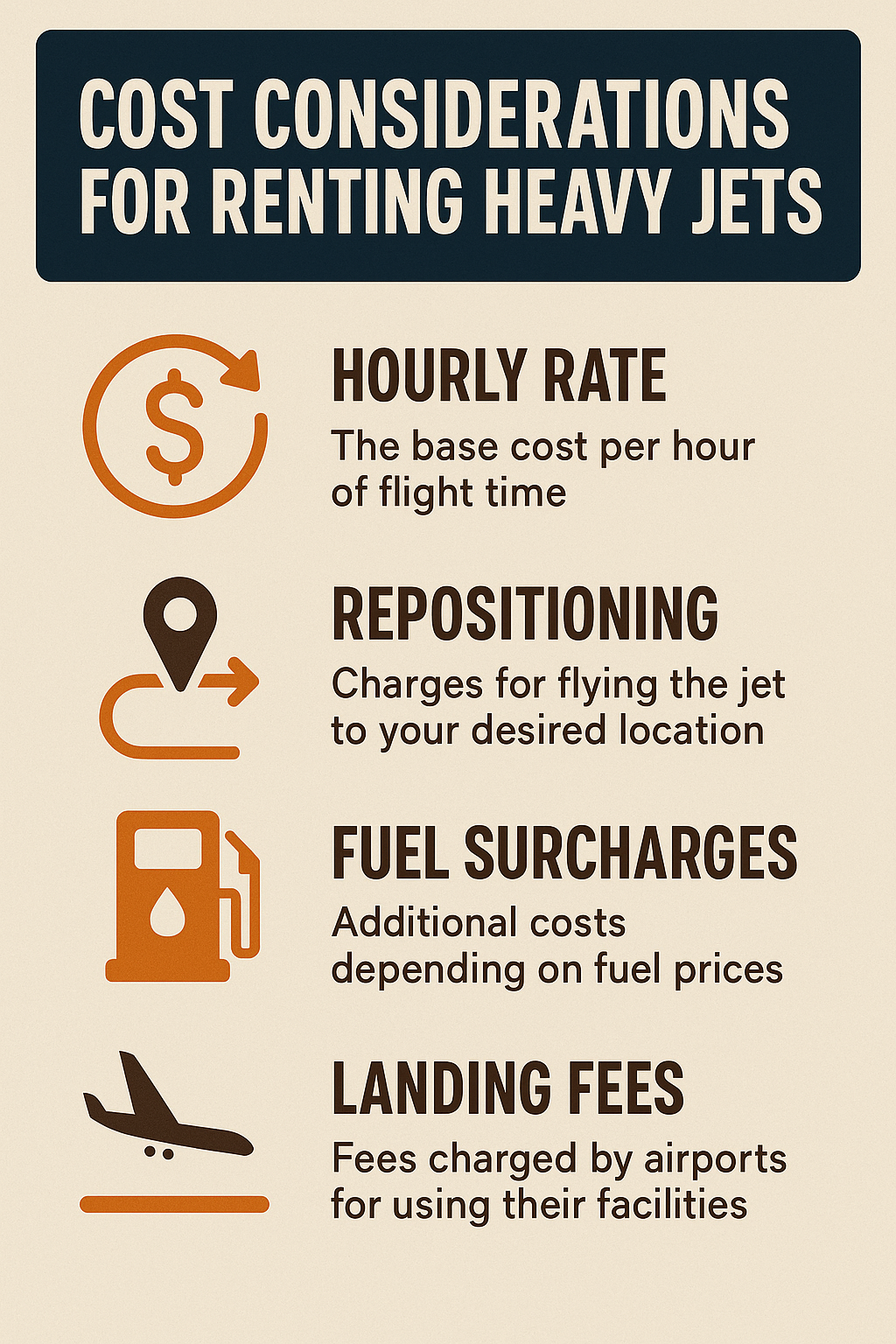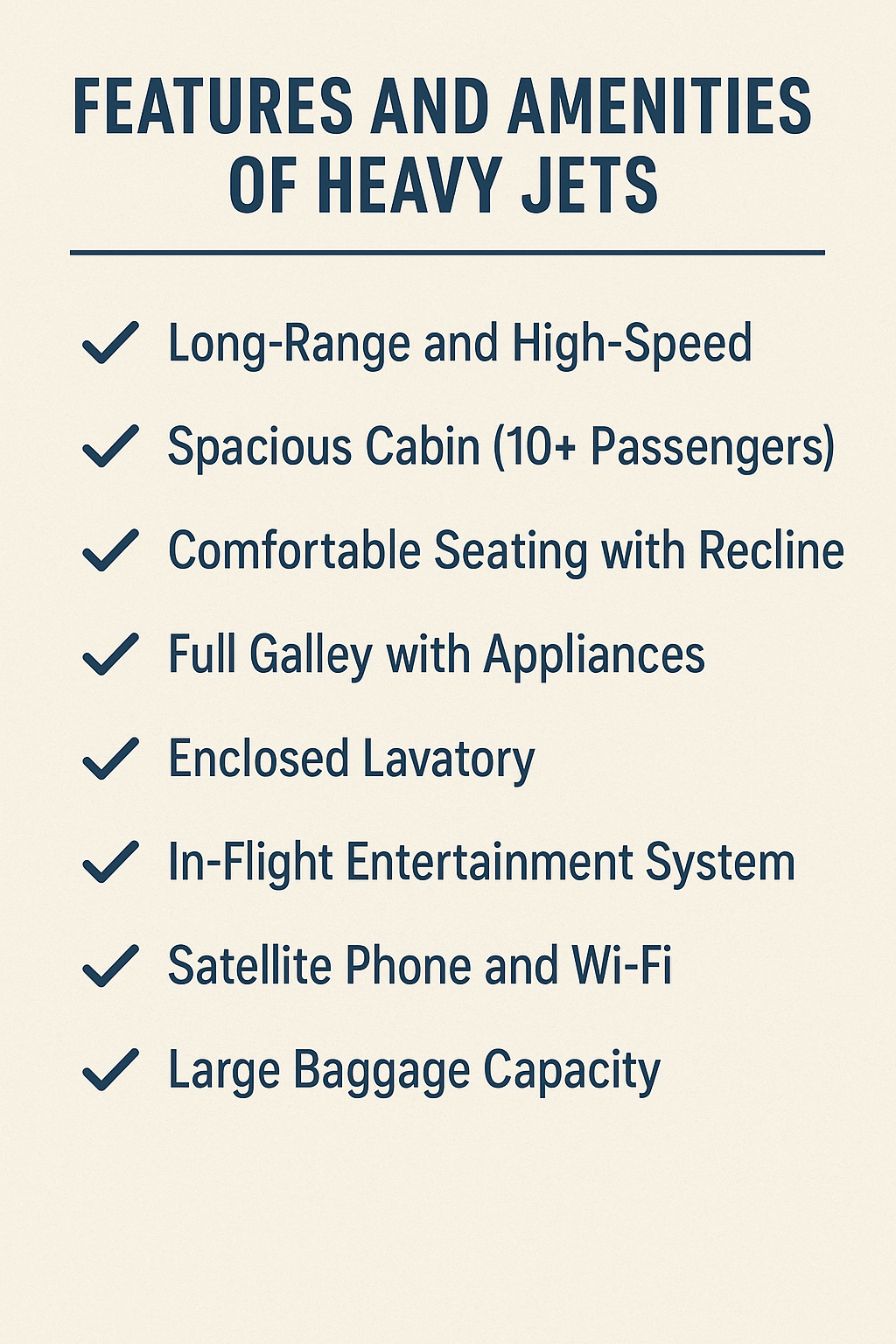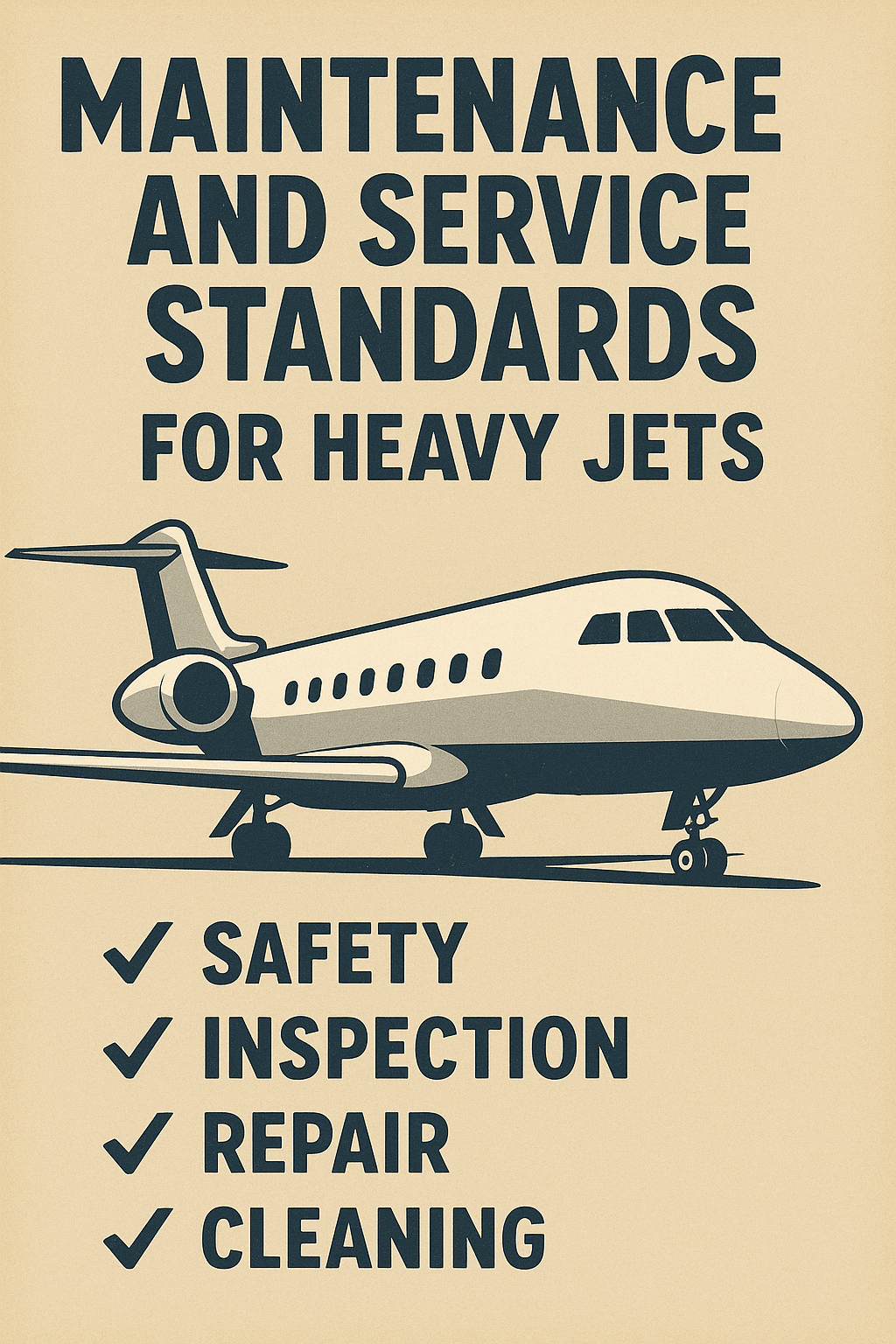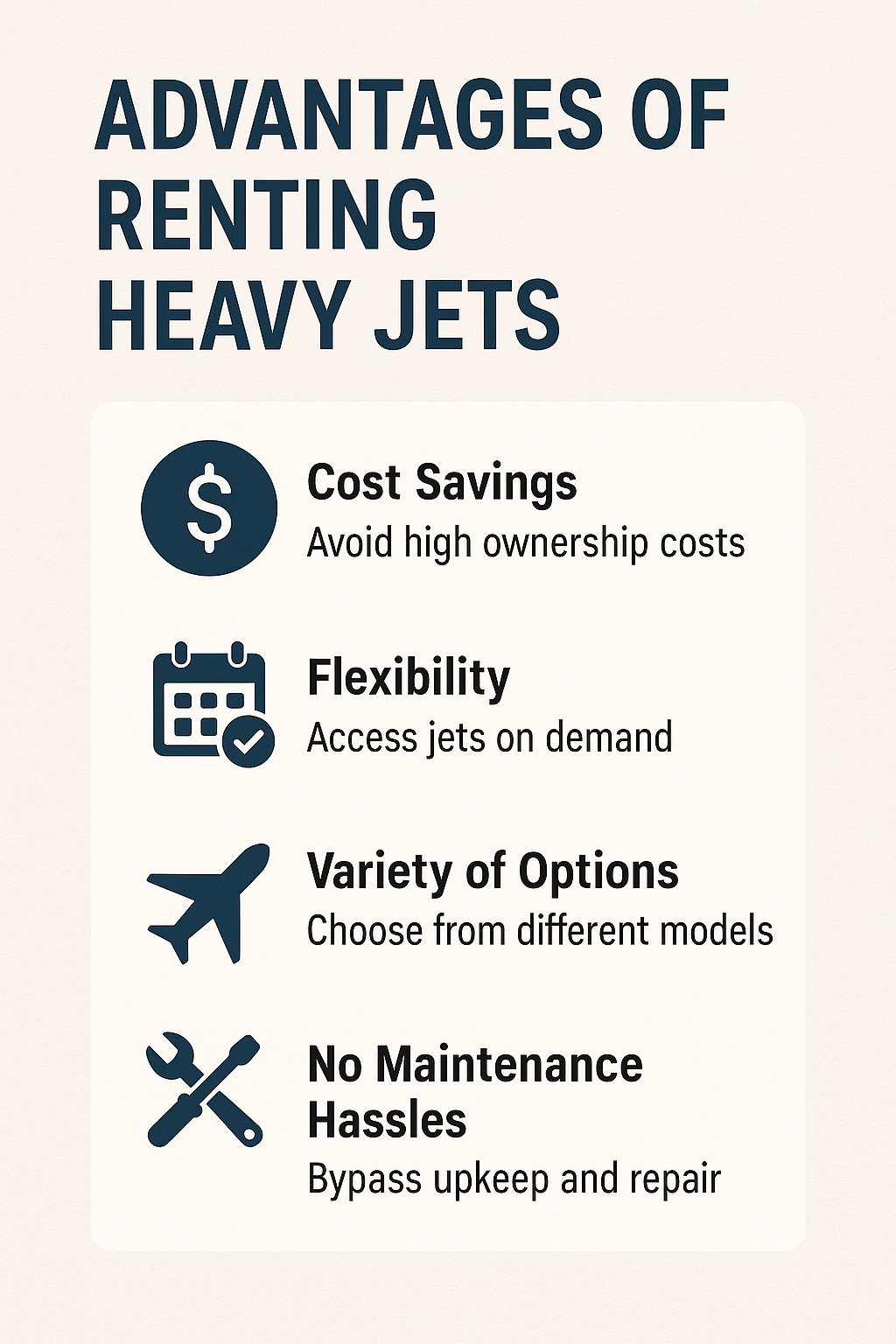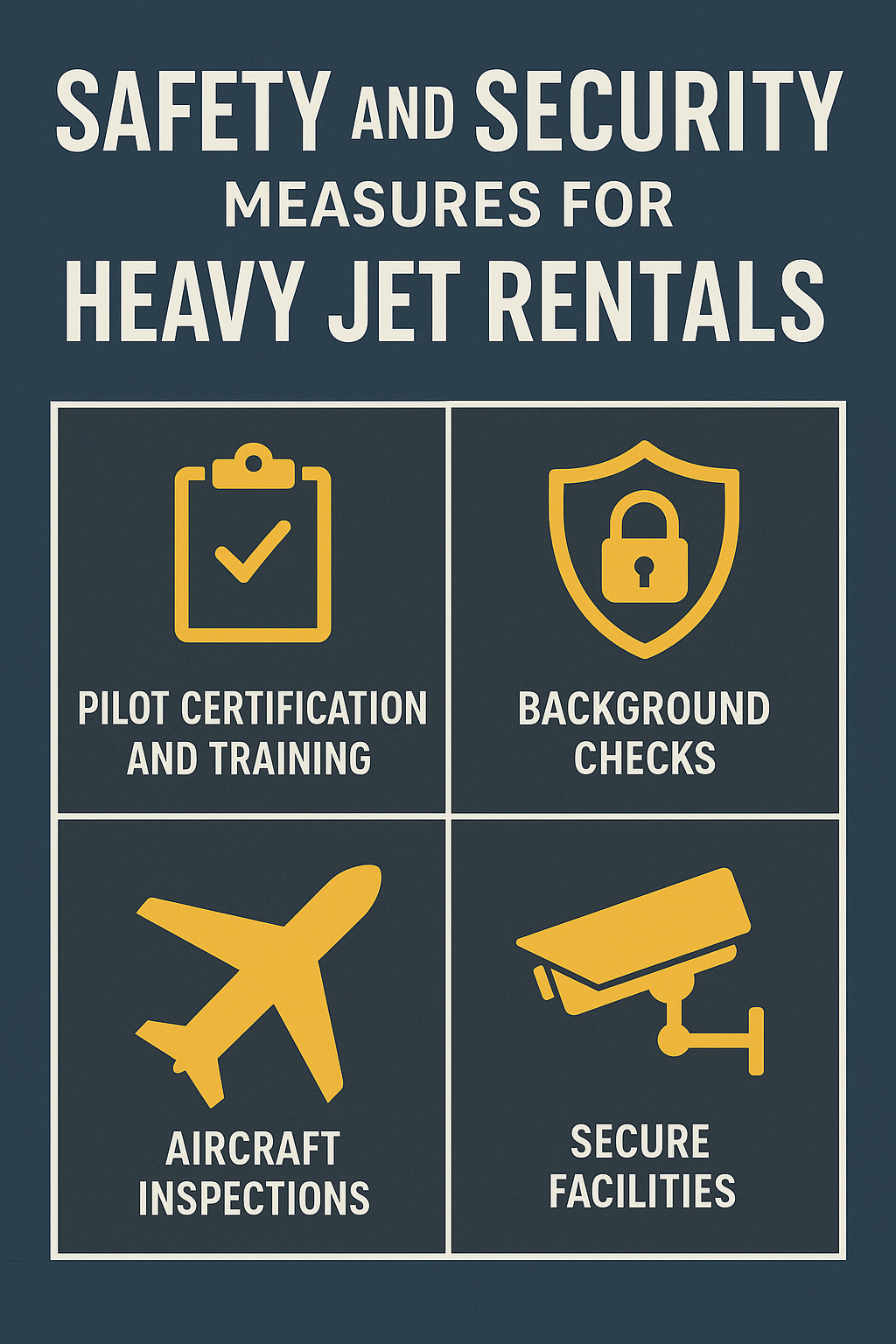Cost Considerations for Renting Heavy Jets
When considering heavy jets, plan for an hourly base rate between $8,000 and $15,000. On top of that, expect fuel surcharges ranging from $600 to $900 each hour.
Don’t forget about additional costs. Airport fees can be between $150 and $500 for landing and $100 to $1,500 for handling. You will also need to account for crew expenses. During busy travel seasons, prices can increase by 20% to 50%.
If you’re flying internationally, be aware of extra customs and overflying fees. One way to save money is by looking into empty leg flights, which can offer discounts of 30% to 75%.
Understanding all these costs helps you make the most of your luxury travel experience. Heavy jets provide a comfortable and efficient way to travel, but being aware of the expenses will help you plan better.
Key Takeaways
Heavy jets are a popular choice for private air travel. Renting one typically costs between $8,000 and $15,000 per hour. During busy travel seasons, these rates can rise by 20-30%.
Fuel surcharges are another important cost. They add between $600 and $900 for each flying hour. This can greatly increase the overall expense of your charter.
Airport fees are not uniform. Landing fees can range from $150 to $500. Handling fees may also vary, costing anywhere from $100 to $1,500.
If you’re flying internationally, be prepared for extra costs. This includes overflying charges, customs fees, and specific taxes that differ by country.
One way to save money is by looking for empty leg flights. These flights can save you between 30% and 75% compared to standard rates.
With these factors in mind, careful planning and budgeting are essential for an enjoyable heavy jet experience.
Base Hourly Rental Rates for Popular Heavy Jet Models
When you think about renting heavy jets for long trips, the hourly rental rates are crucial for your budget. These impressive aircraft usually cost between $8,000 and $15,000 each hour. The exact price varies based on the model and the luxurious features you want.
Take the Gulfstream G650, for example. It’s a top choice for those who need high performance and comfort. Renting it typically costs around $10,000 to $12,000 per hour. It comfortably seats 14 passengers, making it great for groups.
On the other hand, the Bombardier Global 6000 offers a range of $9,000 to $14,000 each hour. It’s known for its long-distance flying capabilities. If you’re looking for a more budget-friendly option, the Dassault Falcon 7X is available for about $8,000 to $10,000 per hour. It still provides great features and performance.
Keep in mind that these rental costs don’t cover extra fees. You’ll need to factor in fuel surcharges and crew expenses.
Fuel Surcharges and Price Fluctuations
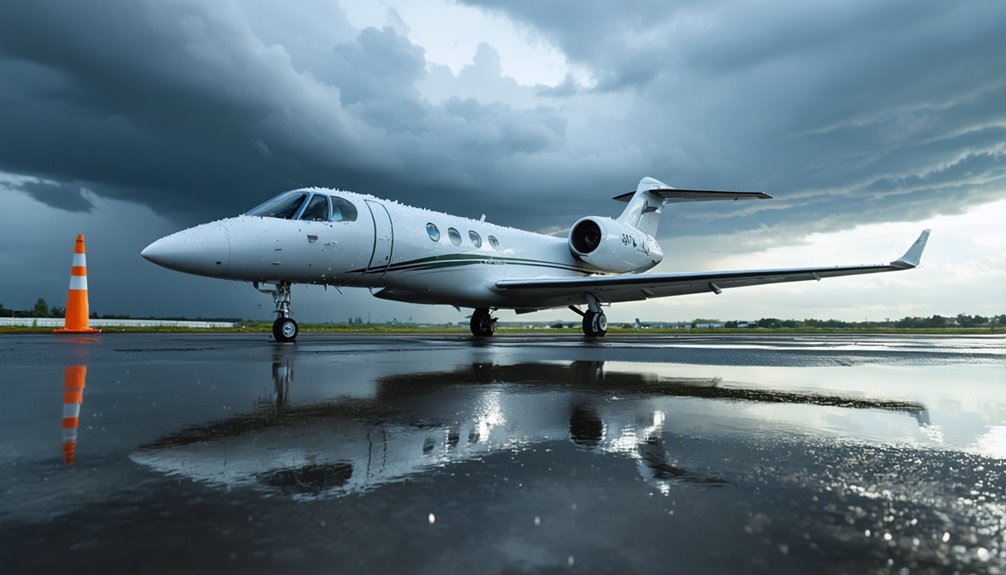
Heavy jets are a popular choice for private aviation, but fuel surcharges can significantly influence your rental costs. These charges can range from $600 to $900 for each flying hour.
Operators often calculate these surcharges based on current fuel market conditions and trends over time. This makes charter pricing quite unpredictable.
The fuel market is known for its fluctuations. Prices can rise or fall without warning, impacting the overall cost of your flight.
To lessen the impact of these surcharges, you might consider negotiating a fixed-rate fuel surcharge. Booking flights during stable fuel price periods can also lead to substantial savings, especially on long intercontinental journeys.
Fuel Surcharge Calculation Methods
Understanding different types of private jets is important for anyone interested in air travel. Heavy jets are a popular choice, especially for long-distance flights. These jets are known for their spacious cabins and ability to carry more passengers and cargo compared to lighter models.
When renting heavy jets, additional costs like fuel surcharges can impact your budget significantly. Operators figure out these surcharges based on two key factors: current fuel prices and the aircraft’s fuel consumption rate. You might see these surcharges between $600 to $900 per flying hour. The final amount often depends on market conditions and how long the flight is.
It’s smart to ask operators how they calculate these surcharges when making a reservation. Most use a formula that compares the average cost of fuel per gallon with the heavy jet’s fuel burn rate. This means that as fuel prices change, so will your surcharge.
Clear communication about these calculations can help you plan your expenses better and avoid surprises beyond the standard hourly rate.
Market-Driven Cost Variables
When it comes to renting heavy jets, three key market-driven factors can significantly influence your total costs.
First, fuel surcharges are a major consideration. These costs can change based on market prices, typically adding between $600 and $900 for each flying hour.
Since heavy jet rentals generally start at $10,000 and can soar to $22,000 hourly, these fuel surcharges can quickly inflate your expenses.
Next, market demand plays a critical role in pricing. During busy travel seasons, the demand for heavy jets can surge. As a result, operators often raise their rates, sometimes dramatically.
Limited aircraft availability means that you might pay much more than expected as demand increases.
Lastly, airport fees can vary greatly depending on the location and services offered. For instance, landing fees can range from $150 to over $500 for each touchdown.
When exploring your options, it’s wise to ask for detailed quotes that consider these market-driven factors. Doing so can help you avoid any unpleasant surprises when it comes to costs.
Mitigating Price Volatility
When fuel prices spike unexpectedly, they can significantly affect your heavy jet rental costs. What might’ve seemed like a reasonable budget could quickly turn into a financial strain. Fuel surcharges can add anywhere from $600 to $900 for each flying hour, in addition to the standard hourly rates of $10,000 to $22,000. This means that price fluctuations can rapidly increase your expenses.
To manage these costs, consider booking your jet during off-peak seasons. Operators often adjust their pricing based on market conditions, so keeping an eye on fuel prices is crucial when planning your charter. The demand for jets follows seasonal patterns, which creates cycles of predictable price changes. By understanding these cycles, you can make smarter decisions when renting a heavy jet.
Booking in advance, especially when fuel prices are stable, is a wise strategy. Additionally, it’s smart to set aside extra funds in your budget to cover potential surcharges. This proactive approach to your heavy jet rental planning will help shield you from the extremes of price volatility in the aviation market.
Airport Landing and Handling Fees

Heavy jets are known for their spacious interiors and long-range capabilities. These aircraft are perfect for long-distance travel, accommodating many passengers comfortably.
However, when renting a heavy jet, it’s important to consider the costs associated with airport landing and handling fees. These fees can differ greatly from one airport to another. Major international airports tend to charge higher fees. During busy travel seasons, these costs can increase even more. Airports may impose extra charges to handle the surge in traffic.
Before you book a heavy jet, take time to check the fee structures at both your departure and arrival airports. This can help you avoid unexpected expenses.
Variables Between Airports
When you consider renting a heavy jet, airport fees can surprise you.
Landing fees are a major part of the cost. They can change a lot. At small regional airports, you might pay around $150. In contrast, major international airports can charge up to $500 for the same service.
Handling fees vary too. Depending on what you need, they can range from $100 to $1,500.
If you plan to stay overnight, expect to pay between $200 and $400 for each crew member’s accommodation.
Keep in mind that some airports add extra charges during busy times. Weather can also lead to increased fees.
If you’re flying abroad, customs and immigration fees will add to your expenses. Different countries have different rates, so it’s wise to check these before your trip.
Peak Season Surcharges
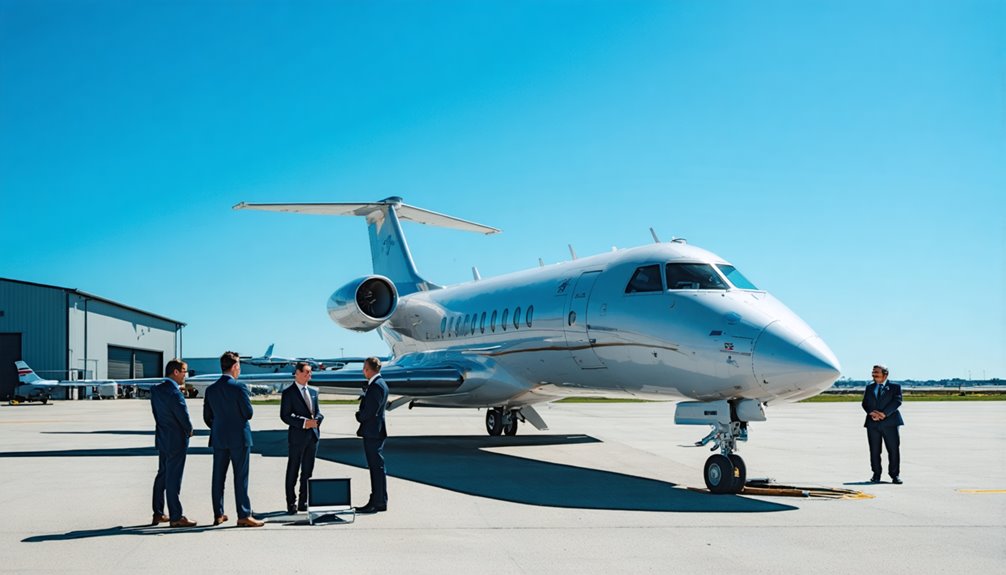
When you rent a heavy jet, the time of your flight plays a big role in the final cost. If you book during busy times like holidays or big events, expect to pay more.
Peak season surcharges can raise your total by 20% to 50% compared to traveling during quieter times.
Landing fees can soar from around $300 to over $1,000 during these busy periods, especially at popular airports.
Handling fees, which cover ground services, can also rise significantly, going from $200 to as much as $1,500 in peak seasons. This can put a strain on your overall budget.
To save money on private jet travel, consider booking your flight well ahead of these busy periods.
This smart planning can lessen the blow of these extra charges and help you secure the flight times you prefer.
Crew Expenses and Overnight Accommodations
When you plan to rent a heavy jet, there are important costs to consider. Crew expenses and overnight accommodations can significantly affect your total charter price. Each crew member usually costs between $200 and $400 per night. This amount can add up quickly, especially for international flights or trips that last several days.
Smart clients include these overnight costs in their budgets from the start. This helps avoid unexpected expenses later. The crew size changes based on the type of aircraft and how long the flight is. For long international journeys, you might face higher accommodation costs in upscale locations.
Don’t forget about other related costs, such as crew meals during layovers. By planning for these necessary expenses, you can get a better idea of the total cost. This way, your travel experience can be more enjoyable and less stressful.
Seasonal Pricing Variations for Heavy Jets
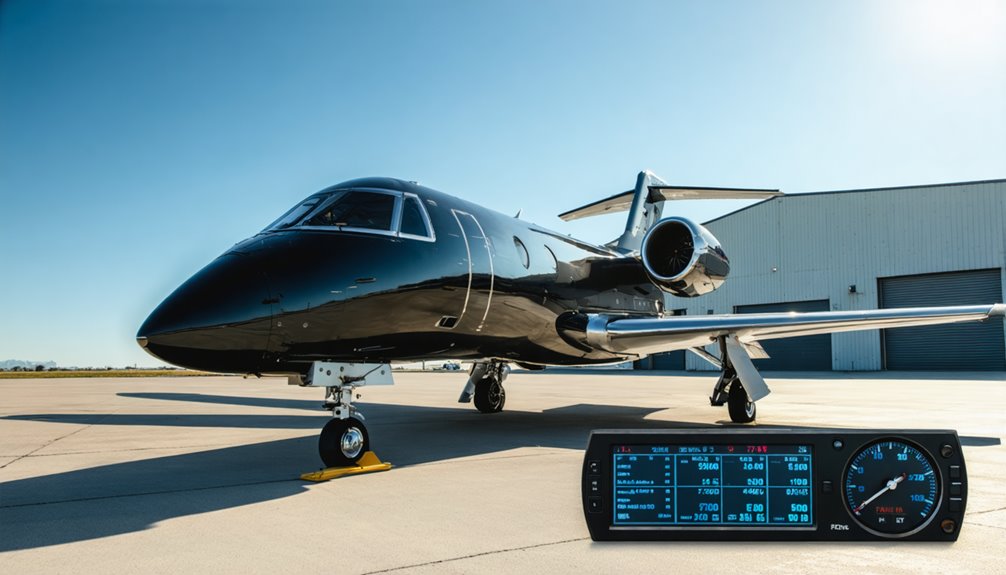
Heavy jets show notable price changes throughout the year. Seasonal demand plays a key role in setting rental costs, especially during summer and major holidays. During these peak times, rates can exceed $10,000 per hour. It’s common to see prices rise by 20-30% compared to quieter periods.
If you want to save money, consider traveling during the off-season. Many operators provide special deals at this time, allowing you to save between 10-25% on your heavy jet rental. The contrast in prices can be significant around holidays, where the busiest travel days can see rates soar to $15,000 per hour.
To secure the best prices, booking in advance is important, especially for peak seasons. Last-minute requests tend to result in higher costs due to fewer available aircraft. Planning ahead can help you avoid unnecessary expenses and ensure a smoother travel experience.
Positioning Costs and Empty Leg Opportunities
When it comes to budgeting for heavy jet rentals, understanding positioning costs is vital. When I book a heavy jet, I’m not only paying for my flight time. I also cover the aircraft’s journey to my departure point. This can significantly increase my charter fees, depending on how far the jet has to travel.
To get the best value in heavy jet chartering, I look for specific strategies:
Tactically approach heavy jet chartering by leveraging empty legs and calculating all positioning costs upfront.
- Empty leg flights can offer savings of 30-75% compared to standard rates.
- I keep an eye on transcontinental empty legs, where discounts can reach over $30,000.
- I always calculate positioning costs before confirming bookings to prevent any unexpected expenses.
- I factor in both positioning and empty leg opportunities, not just the hourly rates.
Positioning costs can heavily influence long-distance travel. However, by taking advantage of empty leg opportunities, I can enjoy luxurious travel without breaking the bank.
International Travel Fees and Taxes
When considering international travel with heavy jets, you encounter a maze of fees and taxes. These expenses are far more complicated than those for domestic flights.
Planning your international flights requires attention to various costs that can significantly affect your overall budget.
Overflying charges can fluctuate wildly based on the country you’re flying over. These fees typically range from $500 to $2,000.
Customs and immigration fees can also add a hefty sum to your trip, usually between $200 and $800, depending on where you land.
Landing and handling fees are another consideration. These can vary greatly, costing anywhere from $150 to more than $500.
Fuel surcharges are based on market conditions, usually falling between $600 and $900 per hour.
Don’t overlook repositioning costs. When your aircraft needs to travel to your departure location, these expenses can pile up quickly.
With careful planning, I can assist you in managing these international complexities effectively.
Luxury Amenities and Their Impact on Pricing
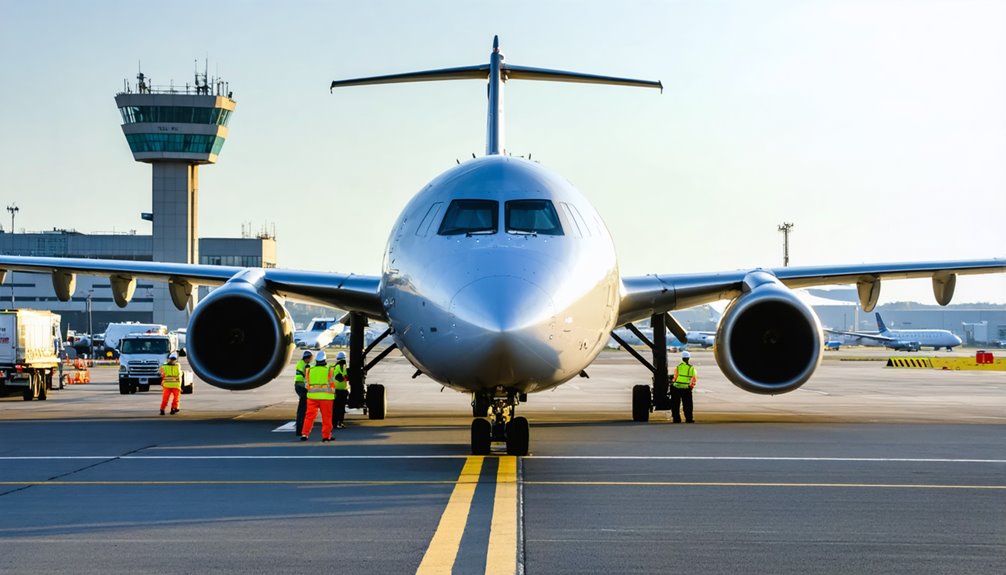
Heavy jets are known for their luxurious offerings, and these amenities significantly impact pricing. When looking at the market, you’ll see hourly rental rates ranging from $10,000 to $22,000. This range is largely determined by the level of comfort and sophistication found on board.
Several key factors influence the cost of heavy jets:
- Cabin layout with private suites and high-end seating options.
- State-of-the-art technology such as fast Wi-Fi and advanced entertainment systems.
- Gourmet galleys equipped for fine dining experiences.
- The age and overall condition of the aircraft, with newer jets typically commanding higher prices.
Extra services like custom catering can increase your total cost by $500 to over $2,000.
Clients often seek the latest innovations and prioritize top-tier features, making these luxury amenities essential to the heavy jet experience.
Long-Term Rental Options vs. Single-Trip Pricing
When it comes to private aviation, heavy jets stand out for their luxury and performance. However, how you choose to pay for these aircraft can significantly affect your expenses.
Long-term rental options can save you money with lower hourly rates and fixed pricing. This is more predictable than the fluctuating costs of single-trip pricing.
Secure fixed pricing and lower hourly rates with long-term rentals, eliminating the unpredictability of pay-as-you-go options.
Single-trip pricing for heavy jets often costs between $8,000 and $15,000 per hour. For long flights, this can add up quickly. In contrast, jet card programs and fractional ownership let you buy a set amount of flying time at much lower prices.
Long-term contracts have other advantages too. They often come with features like guaranteed availability and rate-lock provisions. These protect you from sudden price increases.
For those who travel frequently, these options turn heavy jets into valuable business tools with consistent costs.
Frequently Asked Questions
How Much Does It Cost to Rent a Large Jet?
Heavy jets are a popular choice for those who need to travel long distances in comfort. Renting a large jet typically costs between $8,000 and $14,000 per hour. This price range varies based on several factors.
When considering jet rental, think about extra costs. Fuel surcharges can add to your bill. Pricing trends may also affect the final amount you pay. Despite these costs, the benefits of renting a heavy jet can be significant.
Heavy jets, like the Gulfstream G650 or Bombardier Global 7500, offer spacious cabins and advanced technology. They often come with luxurious amenities, ensuring a comfortable ride. For long-haul flights, these jets can be a smart choice, providing both efficiency and style.
How Much Does It Cost to Charter a Heavy Jet per Hour?
Heavy jets are impressive aircraft, often used for long-distance travel. When it comes to chartering one, you can expect hourly rates between $10,000 and $22,000. Several factors influence this pricing. The specific model of the jet, the distance you plan to fly, and additional costs all play a role.
Different heavy jets come equipped with various features. For instance, some may have luxurious interiors, spacious seating, and advanced technology. Popular models include the Gulfstream G650, Bombardier Global 6000, and Dassault Falcon 7X. Each of these jets offers unique advantages for travelers.
When considering a heavy jet charter, think about your needs. Are you flying for business or leisure? The choice of aircraft can enhance your experience. Researching different options and understanding how pricing works will help you make an informed decision.
How Much Does Renting a Private Jet in 2025 Cost?
In 2025, renting a heavy private jet can cost between $5,000 and $22,000 per hour. Heavy jets are known for their spacious cabins and long-range capabilities, making them perfect for international travel.
These jets often feature luxurious amenities, such as comfortable seating, advanced entertainment systems, and gourmet catering. The cost of renting depends on several factors. The size of the jet, the distance you plan to fly, and the luxury services you desire will all impact the price. Heavy jets like the Gulfstream G650 or the Bombardier Global 7500 are popular choices for those seeking comfort and speed on long journeys.
When considering a heavy jet, think about your travel needs. If you’re flying with a larger group or need to transport cargo, these jets provide ample space. Overall, renting a heavy private jet offers an exceptional travel experience tailored to your preferences.
How Much Does a Heavy Business Jet Cost?
Heavy jets are a significant investment. Most owners spend millions each year. The purchase price for a heavy jet usually ranges from $40 million to $70 million. This initial cost is just the beginning.
Operating and maintenance expenses can add between $1 million and $3 million every year. These costs include fuel, crew salaries, hangar fees, and routine inspections.
Owning a heavy jet means you need to be prepared for these ongoing expenses. It’s not just about the purchase price; it’s about the long-term commitment. Many owners find that the convenience and luxury of having a private jet justify the costs.
Heavy jets are known for their spacious cabins and advanced technology. They offer long-range capabilities, allowing travel across continents without the need for refueling. This makes them popular among business executives and wealthy individuals who value time and comfort.
Conclusion
I’ve spent fifteen years in the world of heavy jet rentals. It’s a fascinating area, filled with unique factors that impact costs. Understanding these elements is crucial. When you’re spending thousands of dollars for each hour you fly, every detail counts.
Heavy jets are among the largest private aircraft available. They offer ample space, luxury, and long-range capabilities. However, they also come with specific expenses. Fuel costs, maintenance fees, and crew salaries can add up quickly. Knowing these costs can help you make better choices.
If you want to become a knowledgeable aviation consumer, focus on these price components. This knowledge can elevate your experience. After all, the value of your flight isn’t just in the destination. It’s also in the choices you make along the way.
With careful planning, you can maximize your investment in heavy jet rentals. Stay informed about the market and understand the aircraft you’re considering. The more you know, the better your flying experience will be.
